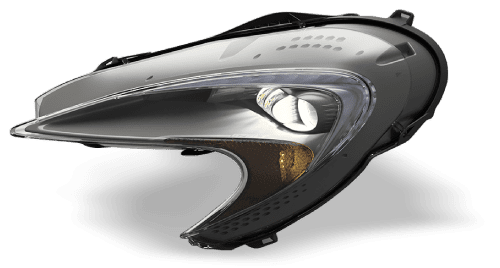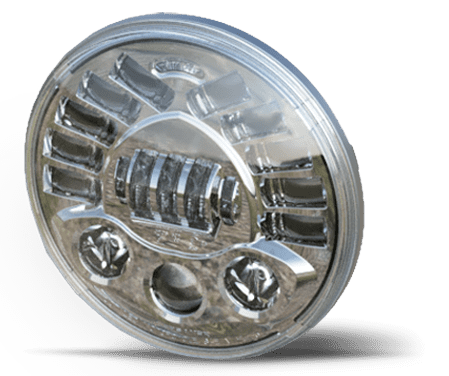
Ways Smart LED Lighting Is Changing the Automotive Industry

Enhanced Safety Features with Smart LEDsSmart LED lighting has been quietly transforming the automotive landscape, turning traditional functionalities into innovative experiences. Not only do LEDs offer better energy efficiency compared to their halogen counterparts, but when paired with smart technologies, they take vehicles to a new level of safety, design, and functionality.
Follow this guide to learn the major ways smart LED lighting is changing the automotive industry. Whether you’re in charge of one vehicle or a whole fleet, knowing the right lighting solutions for your vehicle will help you find an efficient, effective solution.
Enhanced Safety Features with Smart LEDs
Visibility is key to driver safety, and smart LED lighting offers a significant leap forward in this regard. Unlike traditional bulbs, LED lights can produce brighter, sharper, and better-focused beams, improving nighttime and adverse-weather visibility.
Smart LED systems use adaptive technology to adjust beam intensity and direction based on conditions such as speed, oncoming traffic, or road curvature. This adaptability not only ensures optimal lighting conditions but also prevents glaring, which can compromise the safety of other drivers. The adaptive nature of smart LEDs makes highways and crowded urban areas significantly safer.
Add to this the development of smart taillights and brake systems, which adjust brightness in real time to signal intentions more effectively. Then, it becomes clear how LEDs are addressing some of the most pressing road safety concerns.
Energy Efficiency and Environmental Benefits
Amid growing environmental challenges, reducing energy consumption has become a priority in the automotive sector. Smart LED lighting stands as an answer to this challenge by consuming substantially less power than traditional systems. LEDs contribute to prolonging battery life in electric vehicles and improving fuel economy in combustion-engine models.
LEDs also benefit from an extended lifespan, lasting far longer than traditional lighting systems. This not only reduces maintenance demands but also minimizes waste, lowering the environmental impact of vehicle manufacturing and upkeep.
Furthermore, this longevity is instrumental for fleet operations and logistics companies, allowing them to reduce the frequency of replacements and associated costs while making strides toward sustainability.
Integration of energy-saving modes in smart LED systems pushes efficiency even further. Smart features allow lights to dim or power down when not needed, such as during daytime driving, without compromising safety. Reduced energy requirements combined with programmable functionalities are turning LED lighting into an essential solution for eco-conscious automotive manufacturers.

Design and Aesthetics: The Role of LEDs
Design has always been a defining factor in automotive appeal, and smart LED lighting is enabling designers to push creative boundaries like never before. With their compact size and versatility, LEDs assist in innovative configurations that were simply impossible with older lighting technologies. Modern vehicles sport signature headlight shapes, dynamic turn signals, and intricate taillight designs, all made possible through LEDs.
More recently, smart LED features have introduced dynamic lighting displays that extend the role of illumination beyond mere function. Customizable light patterns can provide a unique identity to a vehicle, allowing manufacturers to set their models apart in an increasingly competitive market.
From animated welcome sequences to responsive interior mood lighting, LEDs are allowing car owners to personalize their driving experience in ways that reflect their individual preferences.
Smart applications for exterior lighting aren’t just about aesthetic appeal, either. Technologies such as matrix LEDs allow for precision lighting on roads, minimizing glare for oncoming drivers while maximizing visibility for the vehicle.
The interplay between style and functionality in LED systems is redefining automotive identity, creating vehicles that are as striking as they are practical.
Unlocking Design Possibilities With LEDs
LEDs provide unmatched versatility in automotive design, enabling manufacturers to create sleek, futuristic lighting solutions. Their compact size allows for thinner, more aerodynamic headlamp assemblies, freeing up design constraints and enabling new aesthetic possibilities. LED light strips, customizable colors, and dynamic elements such as animated turn signals have become integral to modern vehicle styling.
Plus, allowing drivers to adjust ambient lighting within the cabin not only enhances the aesthetic appeal of the vehicle but also contributes to the comfort and mood of the occupants. These design capabilities ensure that vehicles equipped with smart LED systems offer a unique and premium driving experience.
Cost Effectiveness of LED Solutions
Another substantial way that smart LED lighting is changing the automotive industry is by providing a solution that is cost effective without compromising quality.
Though smart LED systems might come with a higher initial price tag compared to traditional lighting, the long-term benefits make them a cost-effective solution for both manufacturers and vehicle owners. One of the key cost-saving aspects of LEDs is their durability. These lighting systems are designed to last far longer than halogen lights or other alternatives, drastically reducing the replacement costs over the lifetime of a vehicle.
The low energy consumption of LEDs also contributes to reduced operating costs, particularly for electric vehicles, where every watt saved translates into extended range.
Pair this with improved safety that can help prevent accidents, and the potential financial benefits begin to outweigh the upfront investment.
The Role of Connectivity and Automation
Smart LEDs are becoming an essential component of connected and autonomous vehicles. By integrating with vehicle-to-vehicle (V2V) and vehicle-to-infrastructure (V2I) communication systems, smart lighting can convey critical information to other drivers and road users. For example, external lighting could indicate a vehicle’s intentions, such as stopping or turning, more clearly than conventional signals.
Advanced lighting systems powered by AI and machine learning enhance predictive capabilities, enabling real-time adjustments based on changing road and weather conditions. This adaptability ensures that drivers remain informed, and vehicles respond to challenges more effectively.

The Road Ahead for Smart LEDs
You can equip your vehicle with high-quality LEDs today. For example, at J.W. Speaker, you can visit us for automotive lighting that leverages LED technology to push your vehicle’s illumination capabilities further.
Smart LED lighting marks one of the most significant advancements in the automotive sector in recent years. By combining safety, efficiency, aesthetics, and cost-effectiveness, these systems are setting a new benchmark for what modern vehicles can achieve. Whether you’re appreciating the sleek design of dynamic lighting or benefiting from energy-efficient solutions, LEDs pave the way for a smarter and more sustainable future in automotive technology.
As industry innovation accelerates, staying informed about these advancements is crucial for automakers, suppliers, and enthusiasts alike. Smart LEDs are evolving as a symbol of progress, seamlessly blending form and function in ways that resonate with the needs of today’s drivers.
For those looking to stay ahead in a competitive market, understanding and adopting LED technology is no longer optional; it’s essential.
Elevating Your Vehicle’s Lighting
Smart LED lighting is redefining the automotive landscape, bridging the gap between functionality, safety, and aesthetics. Their energy efficiency, long lifespan, and customizable design make them an indispensable element of modern vehicles. Furthermore, as the automotive industry embraces connectivity and automation, smart LEDs will play a central role in shaping the vehicles of the future.
For manufacturers, the integration of smarter lighting systems is not just an enhancement—it’s an opportunity to lead the market in innovation while meeting evolving consumer and environmental demands. Invest in LED lighting today to unlock the limitless potential of this automotive technology.


